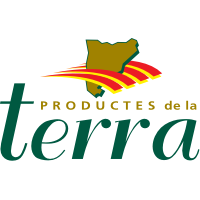PDO Cheese from Alt Urgell and Cerdanya
This Protected Designation of Origin corresponds to a tender and creamy cheese. Made from Frisian cow's milk, which has been made in these two regions since the formation of the Cadí cooperative in 1915.
This is a pressed pasta cheese, cylindrical in shape and moist natural crust. The paste is cream or ivory colored, with abundant eyes, of mechanical origin, distributed throughout the paste. The texture is semi-soft and the consistency tender and creamy. The aroma is sweet and penetrating, and the flavor is soft, fruity at first and very pleasant. It is made exclusively with Friesian cow's milk. In the basic feeding of these livestock, the abundant meadows and fodder of the local valleys, ideal for dairy production, are very present; Milk is collected daily. Once collected, it is homogenized and pasteurized, in order to eliminate any microorganism that may alter the quality of the product. It is then passed to the set tanks, to cause its coagulation by adding lactic ferments, where it is kept for 30 minutes at a temperature of 30 to 33 ºC. The paste obtained is molded to give it its characteristic format, and pressed. Once it has taken its final shape, it is immersed in salt water at a temperature of 10-14ºC, so that it reaches the appropriate salting point. Finally, it is ripened in cavas where, for the first few days, it is sown with specific aromatic ferments. The cheese remains in the cellars for a minimum of 45 days, in a process that gives it its characteristic creaminess, consistency and body.
Season calendar
- GEN
- Feb
- Sea
- Apr
- Never
- JUN
- JUL
- AUG
- THIRST
- OCT
- nov
- From
Complementary information
Until the beginning of the twentieth century, Alt Urgell and Cerdanya were agricultural regions dedicated to the cultivation of vines and cereals, and to a lesser extent, potatoes, legumes and fodder. When phylloxera devastated the vineyard, it destroyed the main agricultural resource of these regions, so alternatives had to be found. The cultivation of vines, olive trees and almond trees was receding, while pastures and the number of cows increased. In this context, in 1915 the Cadí Cooperative was founded, whose first objective was the production and marketing of beef. The increase in meat production led to the appearance of a surplus of milk, which had to be found an outlet and this led to the appearance of the first industrial elaborations of butter and cheese. Between the 1940s and 1960s, this was the main type of cheese marketed in large population centers in Catalonia, such as Barcelona. The production of cheese, which originated from the artisan tradition, was progressively incorporating new techniques for quality improvement, which have been developed until today, and which led to the year 2000 reaching community recognition as a Protected Designation of Origin (PDO).
Attributes and nutritional properties
The cheese is sold in whole pieces, from 195 to 200 mm in size and weighing 2.5 kg, which are generally sold at retail in specialized stores or in the cheese departments of establishments. It is presented with the label attached to the upper face and is protected with a suitable packaging. The label includes, in addition to the trade name and mentions required by current legislation, the name and logo of the PDO Cheese of Alt Urgell and Cerdanya, as well as the community symbol. Being a soft and creamy cheese, it adapts perfectly to the preferences of the entire population, making it an excellent ingredient for making sandwiches. It can also be savored with toast dipped with tomato and olive oil. Its softness allows it to be integrated into salads of all kinds. Diced and combined with walnuts, it gives personality and variety to green salads. Although the custom of eating cheese after meals does not have the tradition or extension of other places, it is increasingly common to eat a slice of cheese to close a light dinner or lunch, due to the tendency to reduce one of the main meals to a single dish.








